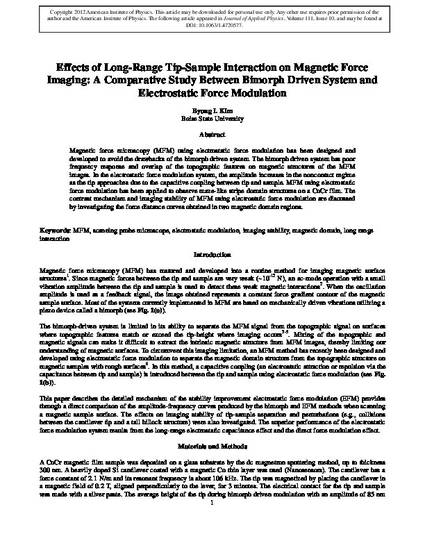
Magnetic force microscopy (MFM) using electrostatic force modulation has been designed and developed to avoid the drawbacks of the bimorph driven system. The bimorph driven system has poor frequency response and overlap of the topographic features on magnetic structures of the MFM images. In the electrostatic force modulation system, the amplitude increases in the noncontact regime as the tip approaches due to the capacitive coupling between tip and sample. MFM using electrostatic force modulation has been applied to observe maze-like stripe domain structures on a CoCr film. The contrast mechanism and imaging stability of MFM using electrostatic force modulation are discussed by investigating the force distance curves obtained in two magnetic domain regions.
Copyright 2012 American Institute of Physics. This article may be downloaded for personal use only. Any other use requires prior permission of the author and the American Institute of Physics. The following article appeared in Journal of Applied Physics, Volume 111, Issue 10, and may be found at DOI: 10.1063/1.4720577.
Available at: http://works.bepress.com/byung_kim/11/
